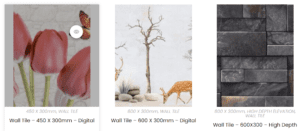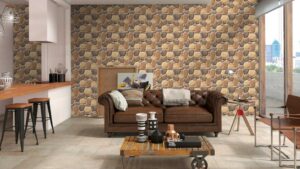Hi everybody previously Titan ceramics posted for general tile and their advantages now we can explain some of ceramic tiles and its subdivisions, sure it’s very useful for Builders and New house Owners
Let us start…
In the earliest world, ceramics were simply made from clay, such as pottery. A traditional example would be earthenware pottery, which is the result of baking or firing clay in a oven or kiln at low temperatures — a cool 1,200 degrees Fahrenheit, compared to more than 2,300 degrees for porcelain!
In the current world have technological advancement have expanded the term’s designation.
Ceramic Tiles
As we know some clarification about tiles, if not know please read carefully it’s very helpful, the tiles are generally made from a mixture of water, sand, and clay. Most probably ceramic is any of the various hard, brittle, heat-resistant and corrosion-resistant materials made by shaping and then firing a non-metallic [1] mineral, such as clay, at a high temperature 1200° Heat at double time .[2] Common examples are earthen clay, porcelain made as per European standard, the tile are thin, flat tiles that are usually shaped with bevelled edges. They are used for lining or covering a surface, and may provide corrosion resistance, thermal protection, wear resistance, and/or surface decoration. Ceramic tiles come in many different shapes, sizes, and colours. They are secured to a surface such as a subfloor with mortar.
Types
Ceramics tiles are many various types, mutually in conditions of categories and features. Examples include:
- Waterproof
- Mosaic Tiles
- Ribbed Tiles
- Vitrified Tile
- Quarry
- Saltillo
- Terra-cotta
- Earthenware
- Stoneware
Application
Ceramic tiles are durable and hard wearing, making them suitable for covering surfaces such as roofs, floors, walls, bathroom showers, and other objects. According to the Porcelain Enamel Institute (PEI) recommendations as follows
1. Ceramic Tiles are only for wall applications; it’s not suitable for foot traffic.
2. Ceramic Tiles can handle light traffic, such as in residential bathrooms.
3. Ceramic Tiles can handle light-to-moderate traffic, and are suitable for residential floors.
4. Ceramic Tiles are for moderate-to-heavy traffic, and can be used in medium commercial or light industrial settings.
5. Ceramic Tiles can handle heavy to extra-heavy traffic, making them suitable for all types of commercial and industrial floors.
Ceramic tiles are rated for scratch hardness according to the MOH scale, which was named after German mineralogist Friedrich MOHs. The MOHs scale measures the ability of ceramic tiles to withstand scratches from a variety of minerals, ranging from the softest (talc) to the hardest (diamond).
Manufacturing Process
Manufacturers of ceramic tiles may use proprietary mixtures of elements to make products. Typically, however, all of these mixtures include clay mixed with sand, feldspar, quartz, and water. All of these ingredients are mixed in a mill to create a substance called body slip. The body slip contains approximately 30% water at this point, until it is heated and dried to reduce the moisture content to about 6%. The body slip has the appearance of dust or powder and is compressed into the ceramic tile shapes using a high pressure electric or hydraulic press.
After pressing, the formed tile shape is called bisquet. The bisquet tiles are dried to remove the remaining moisture. Some ceramic tiles remain unglazed, but most are glazed using a glassy substance that contains a mix of pigments that give the ceramic tiles their colour and surface characteristics. Glazed ceramic tiles are fired in tunnel kilns or roller-hearth kilns at temperatures of approximately 1200º F, at two times,
Please visit us for manufacturing process its ease to understand – https://www.youtube.com/watch?v=SsVDR69r3MM

